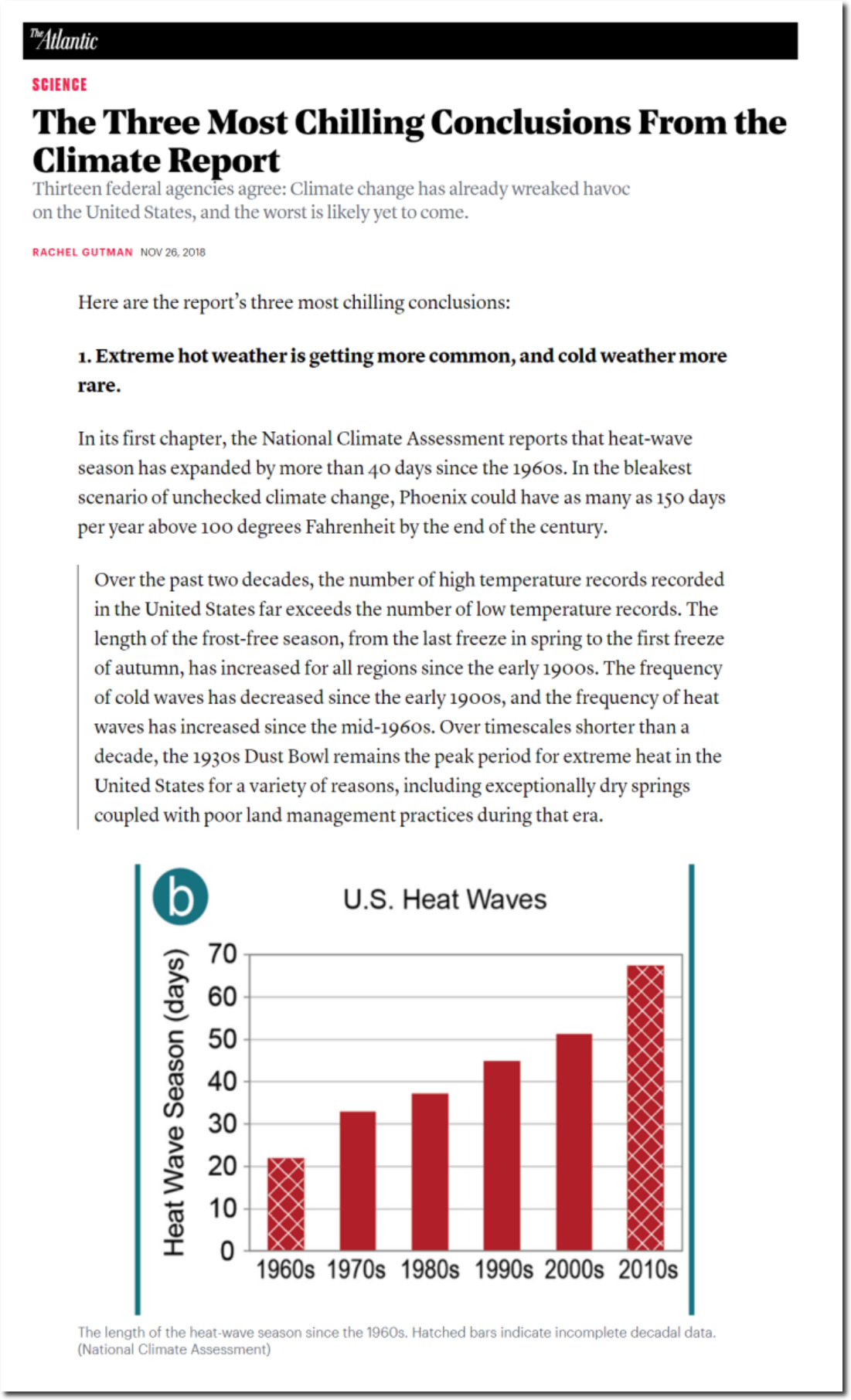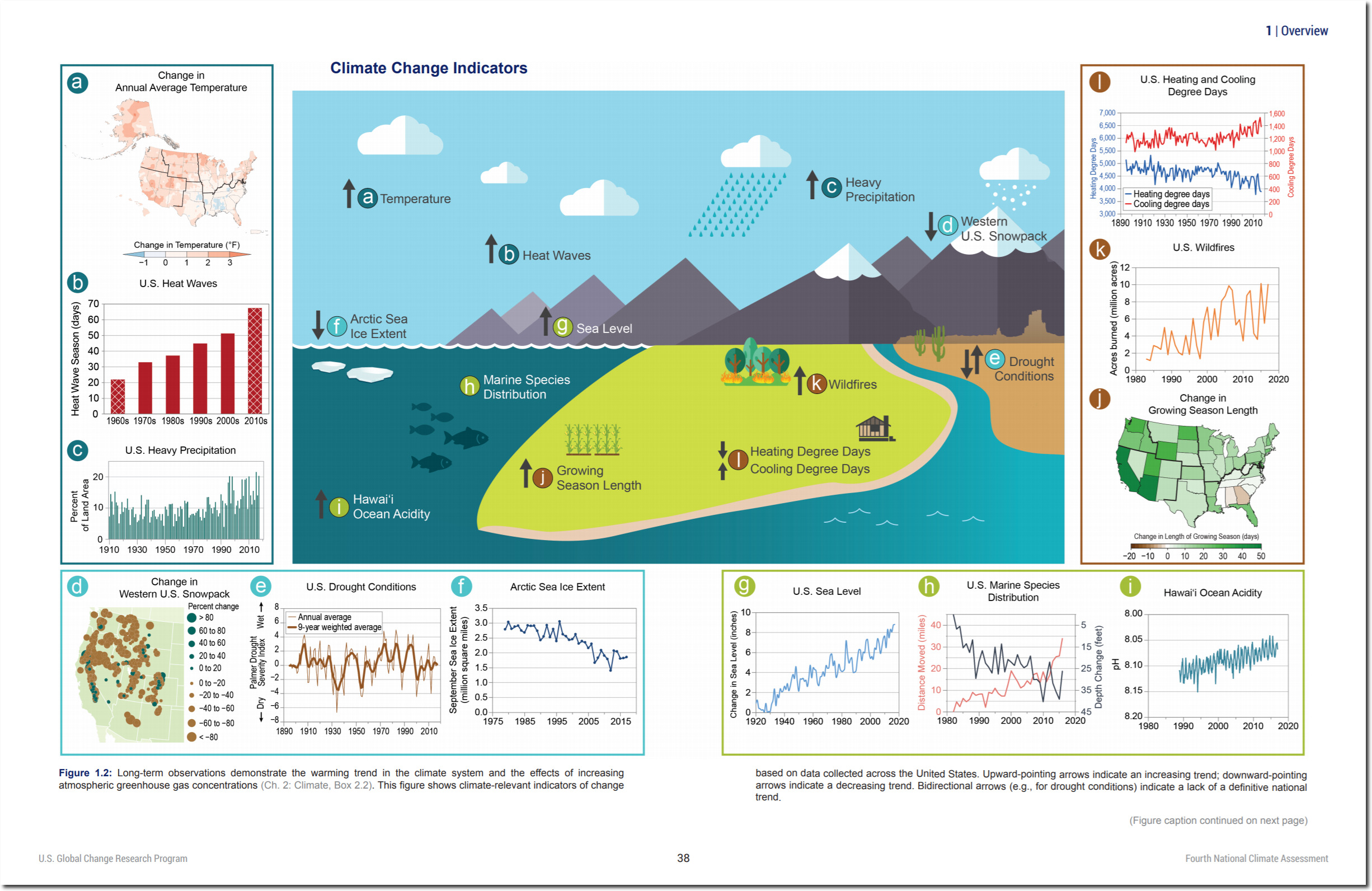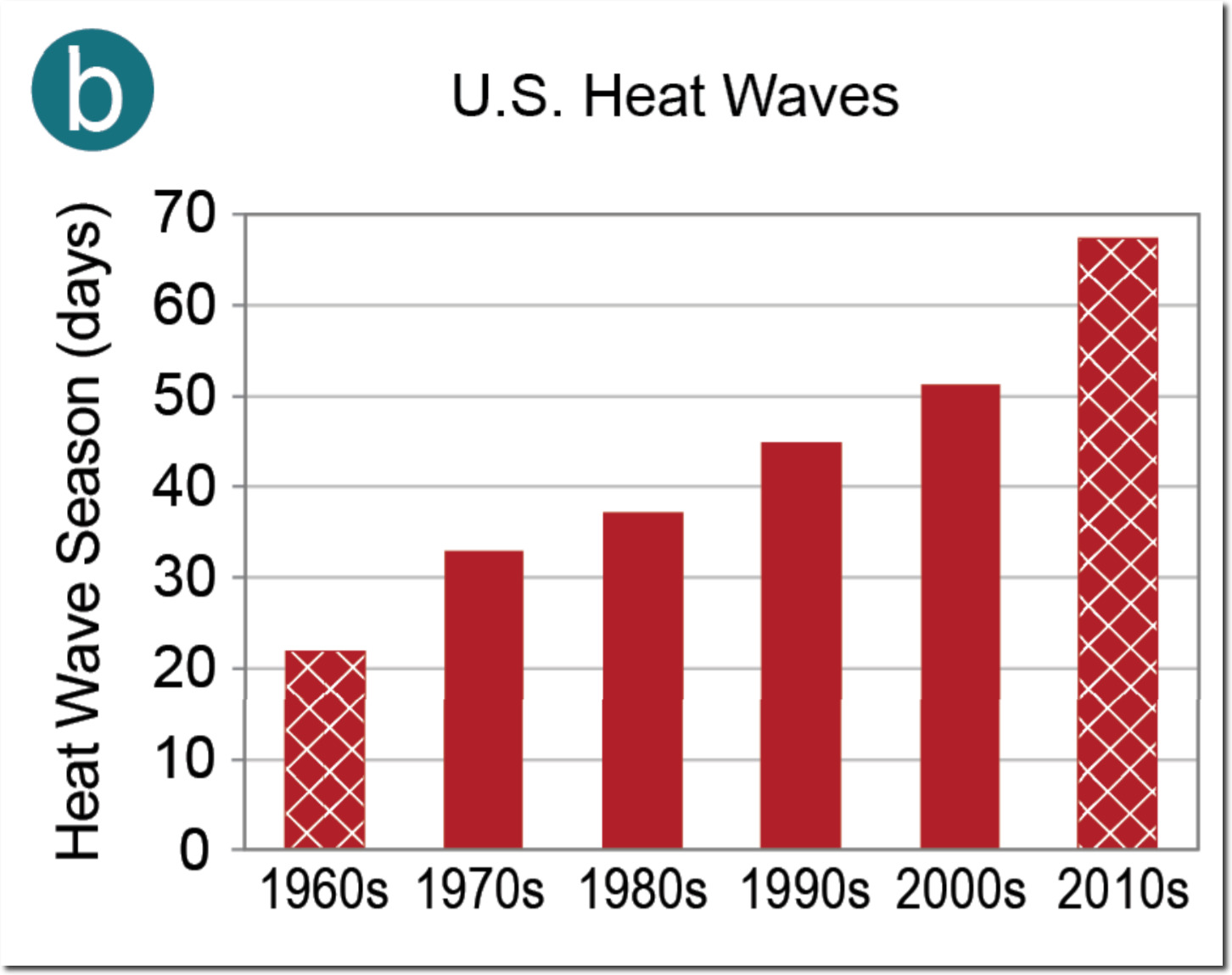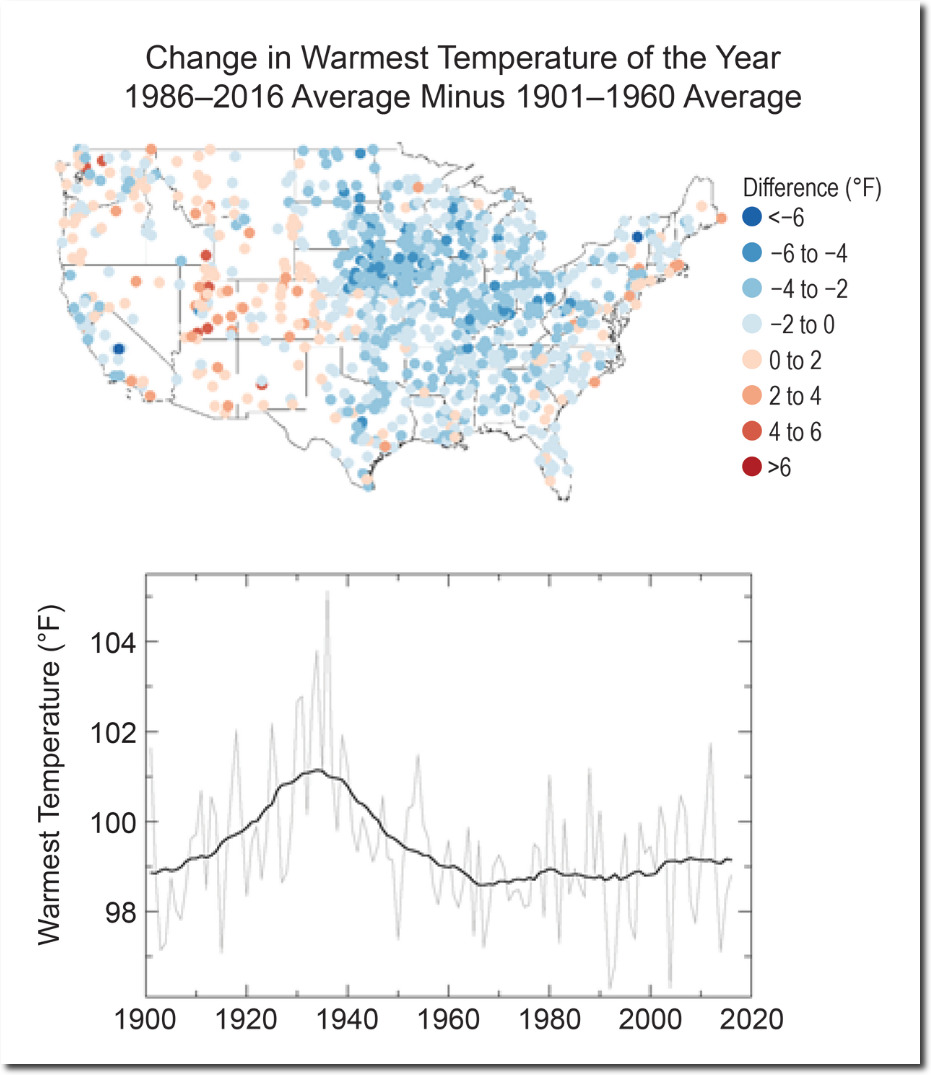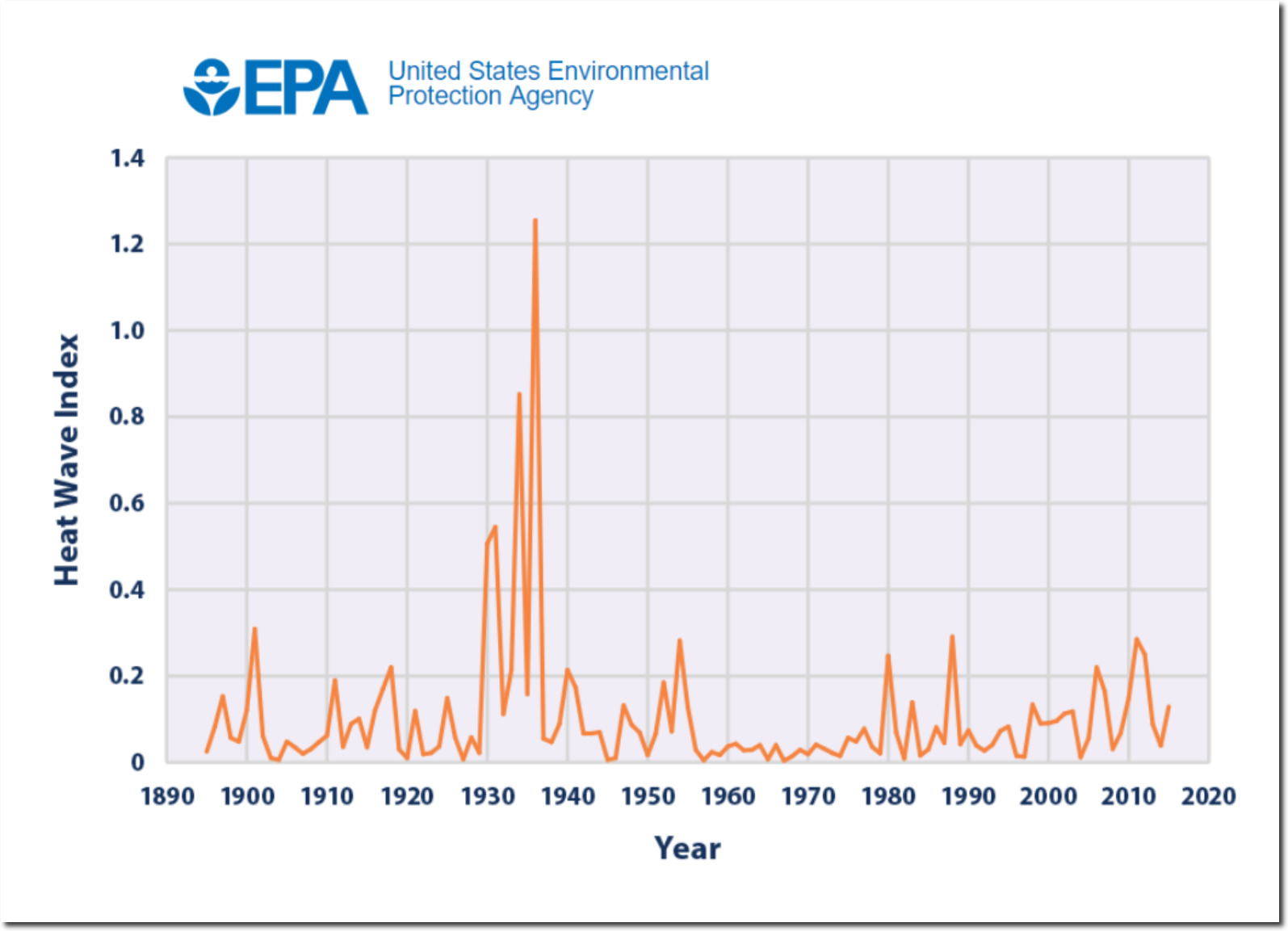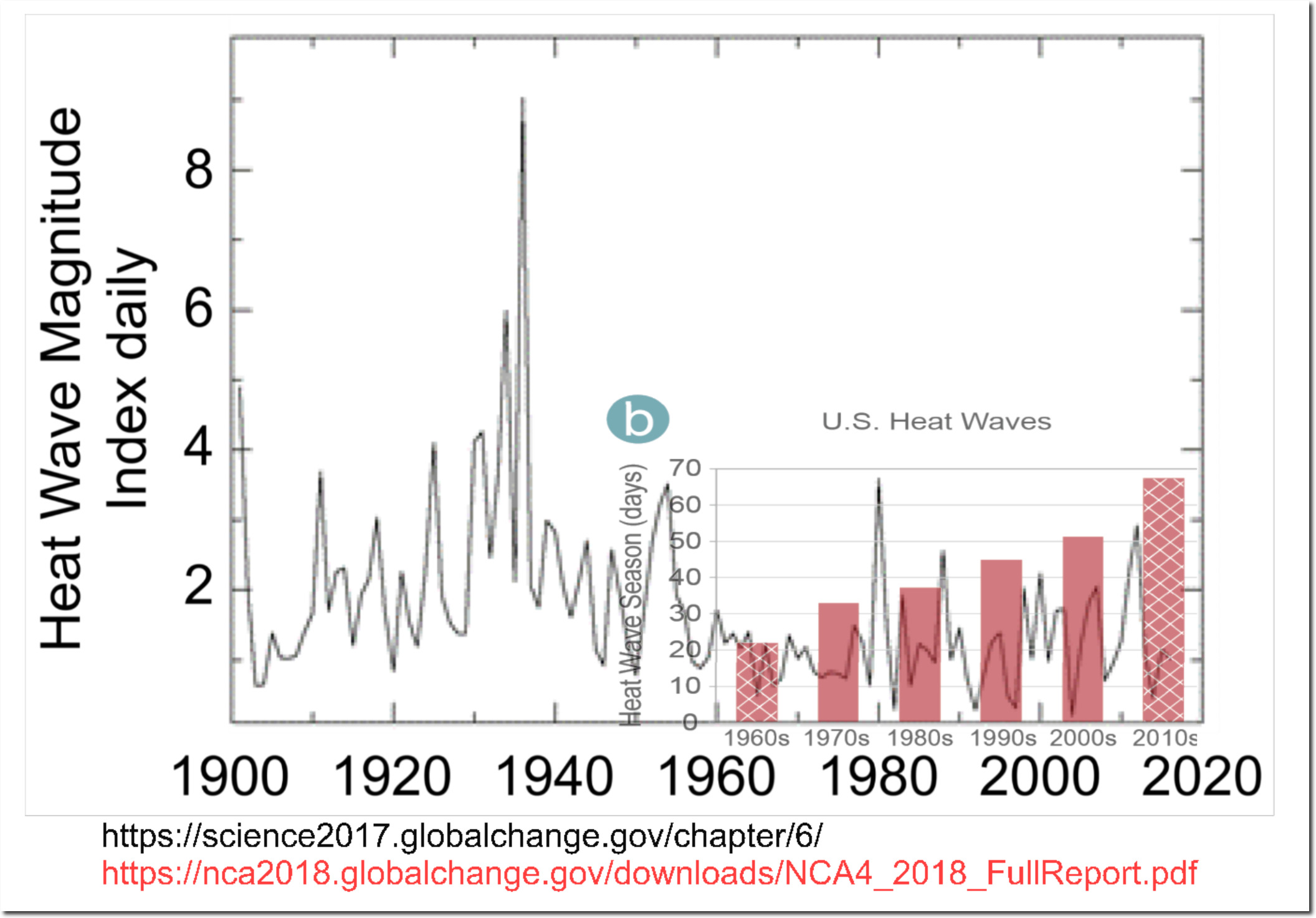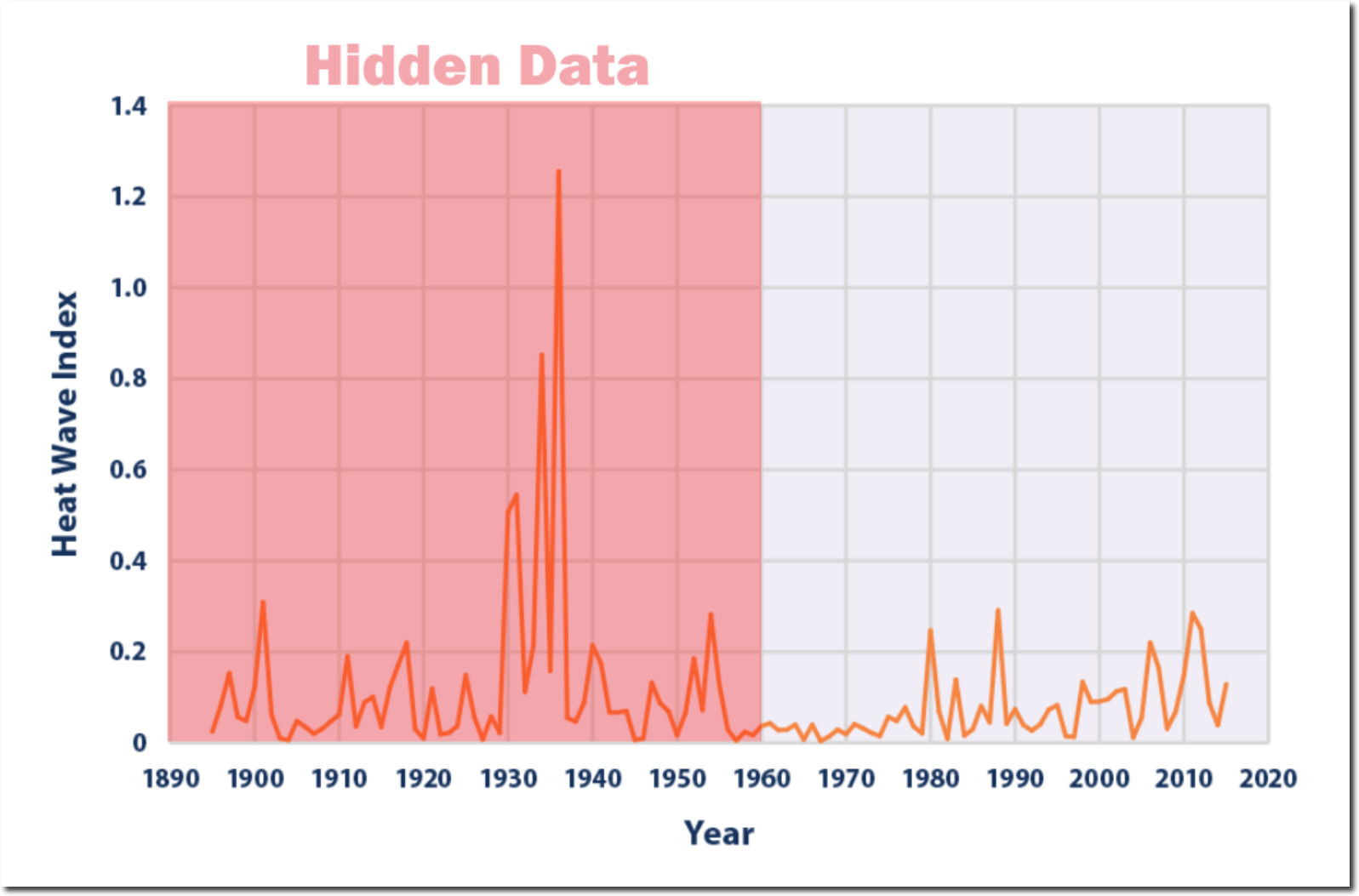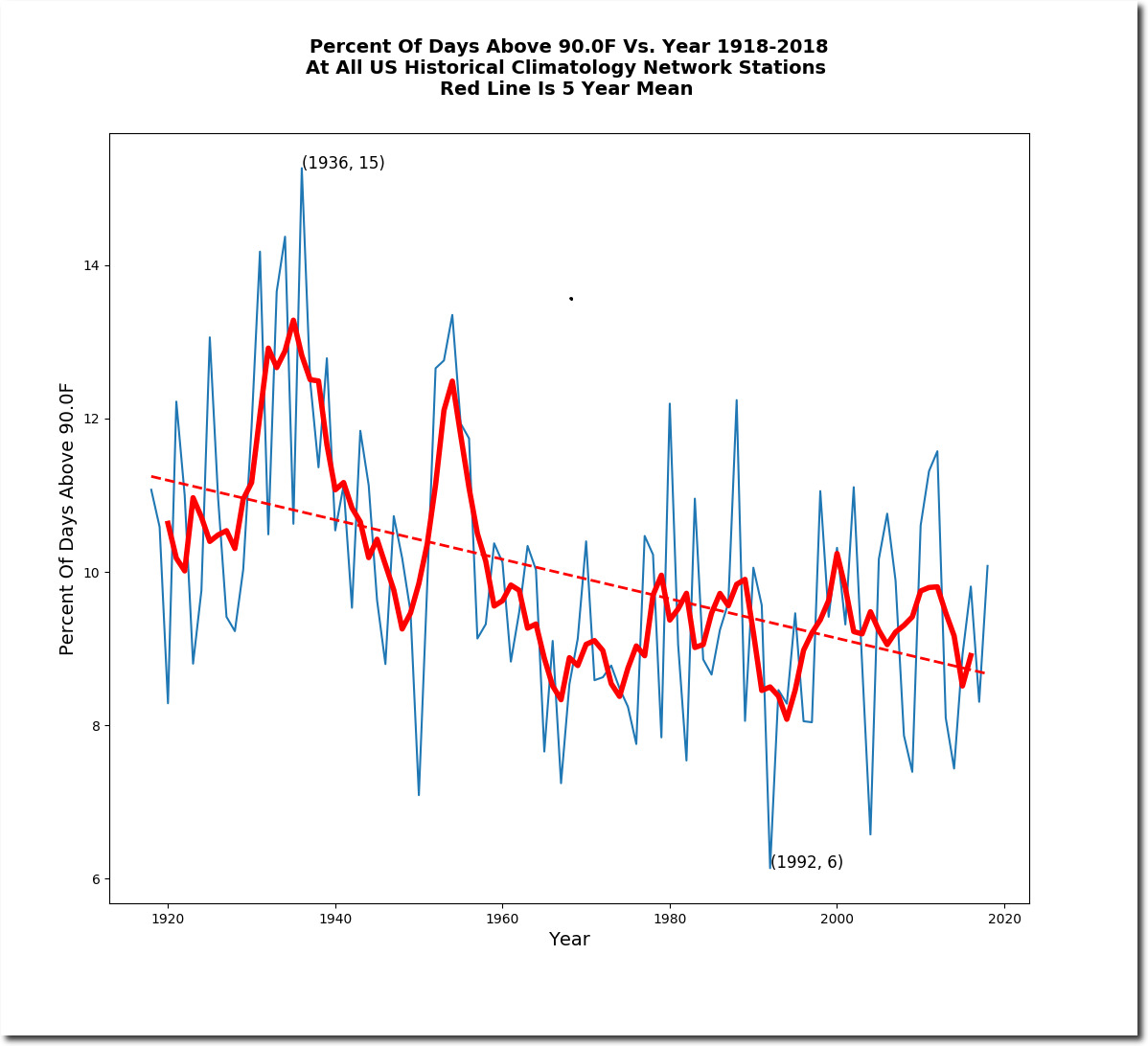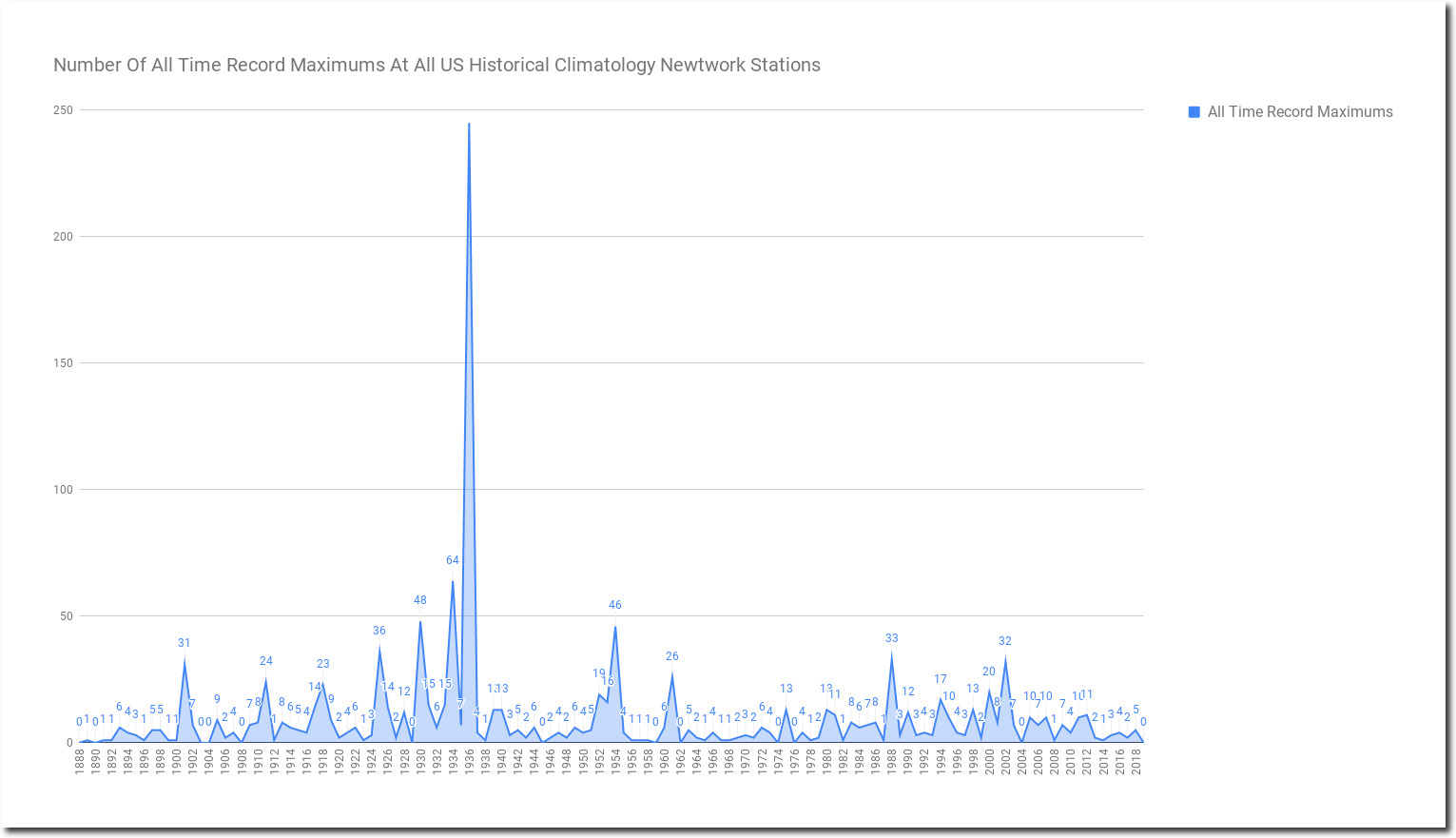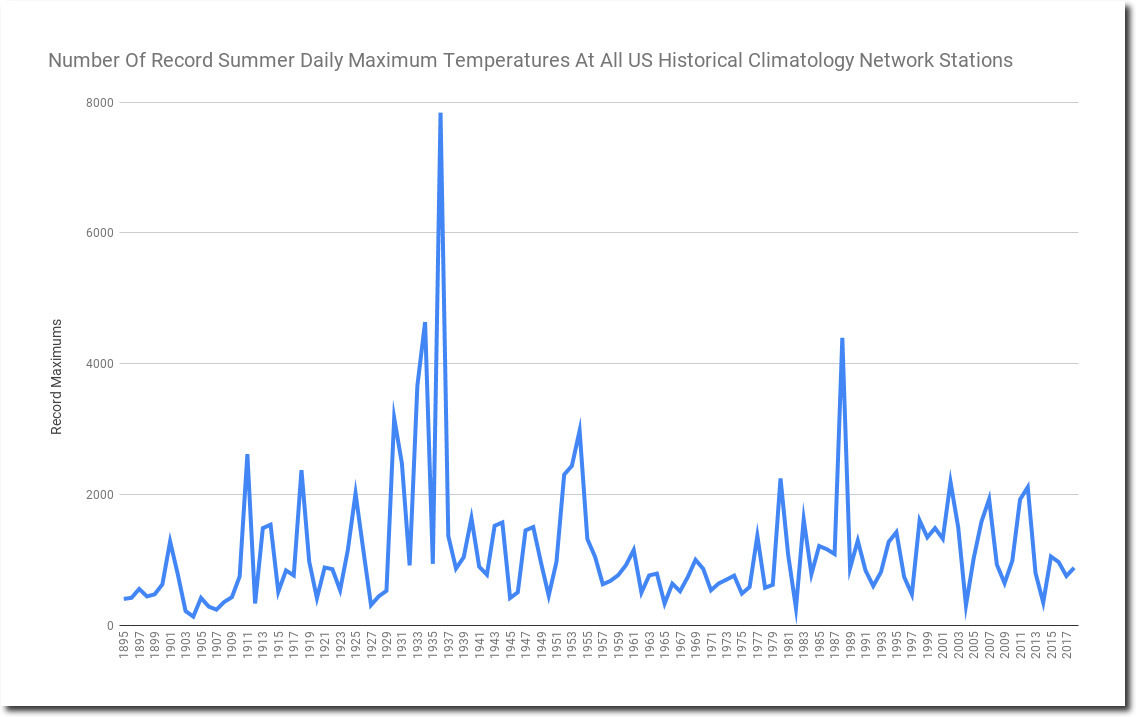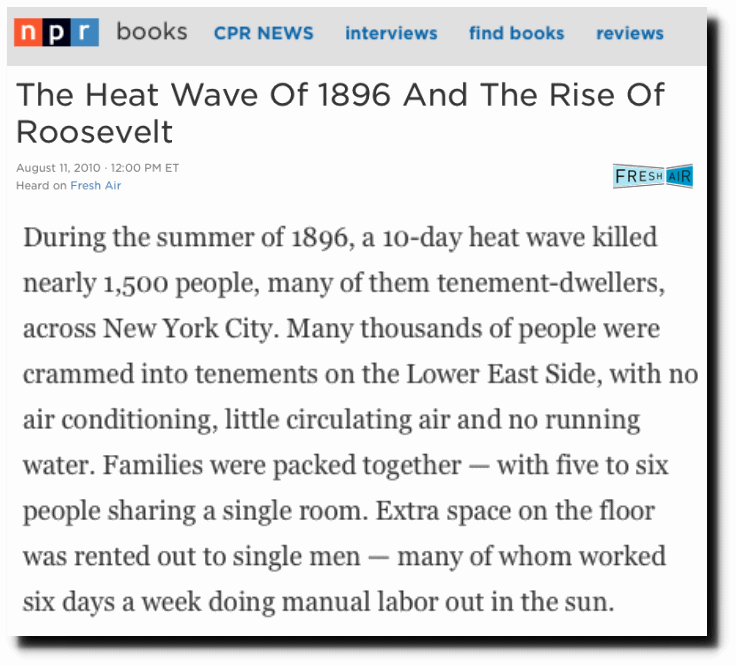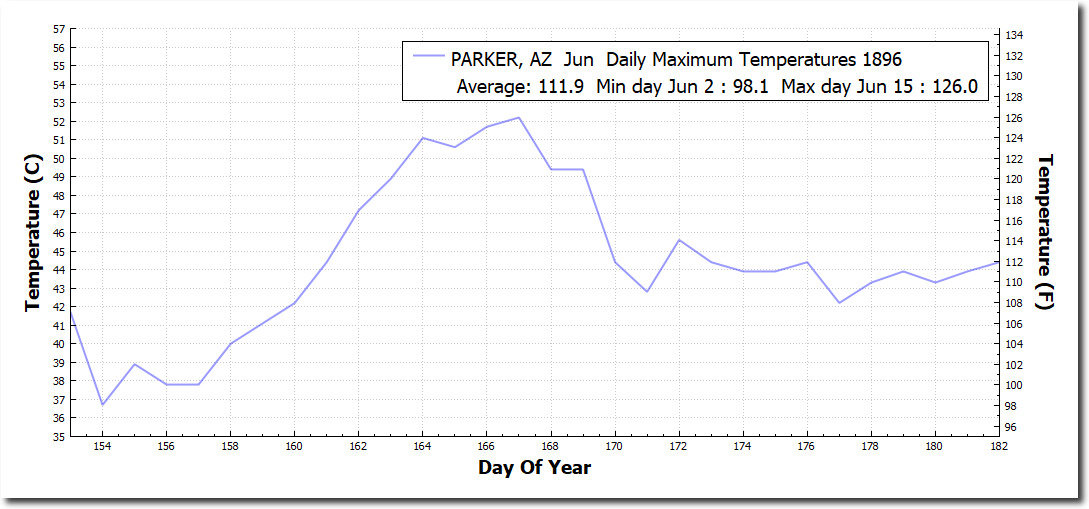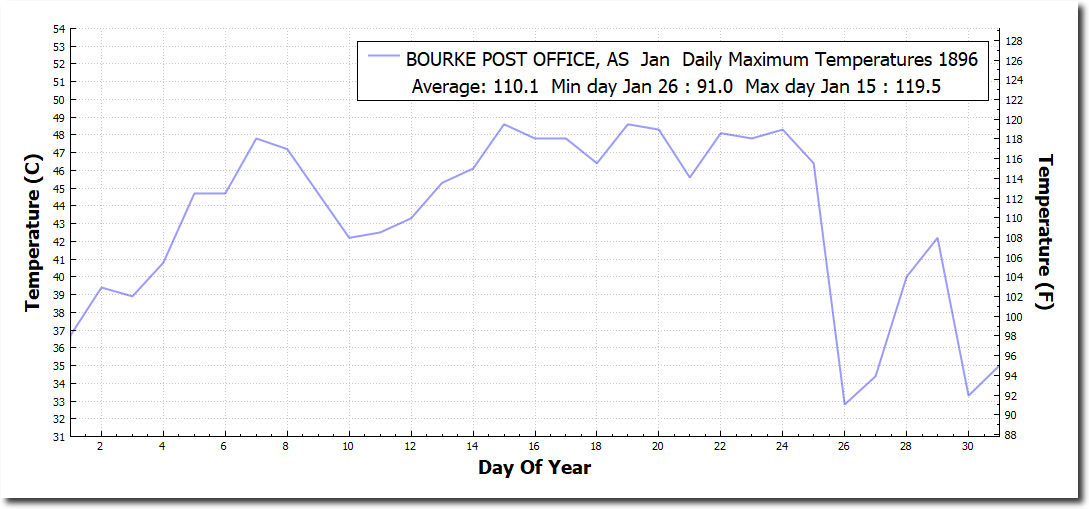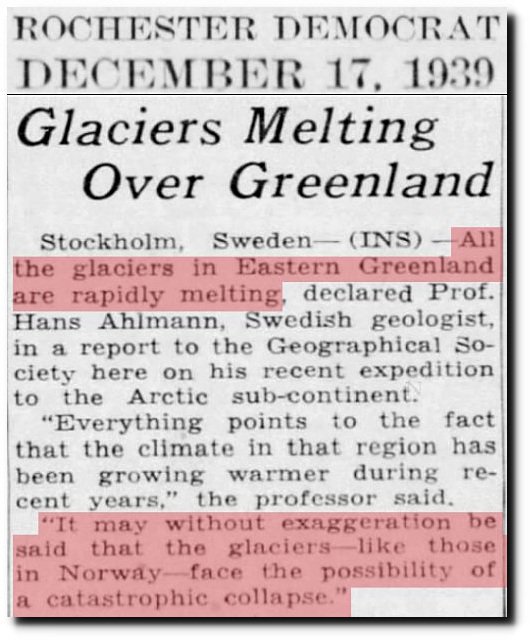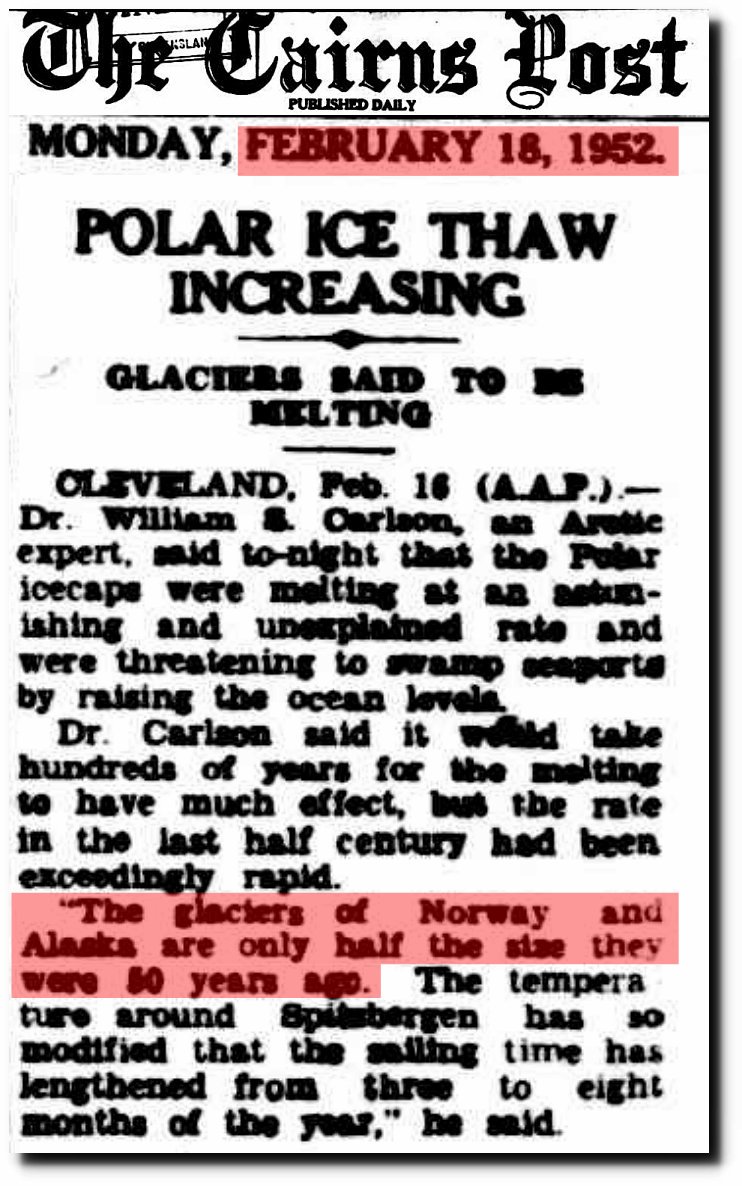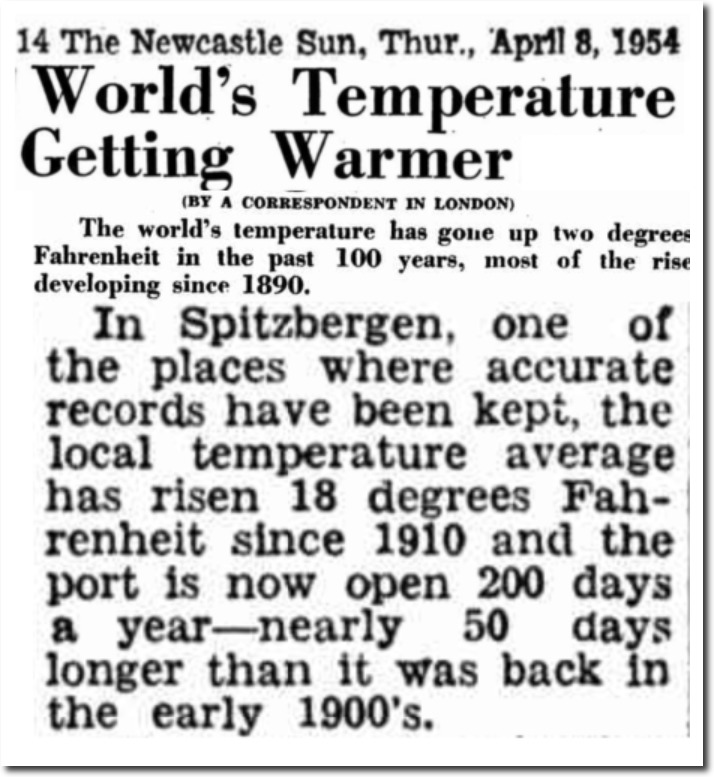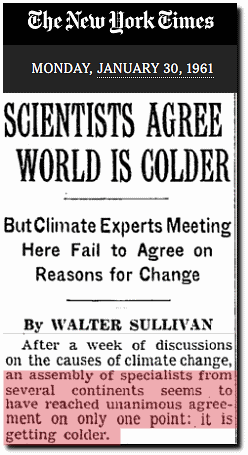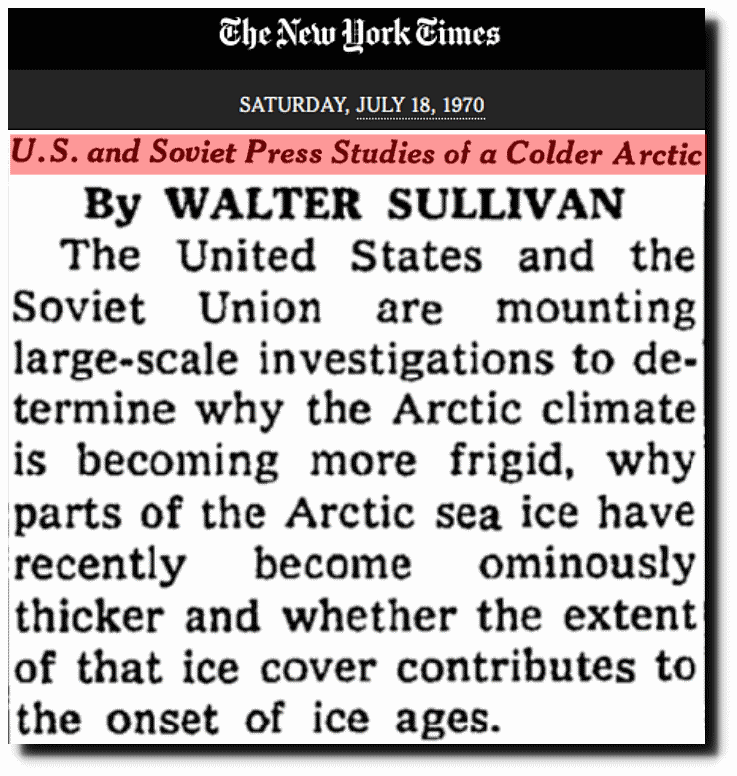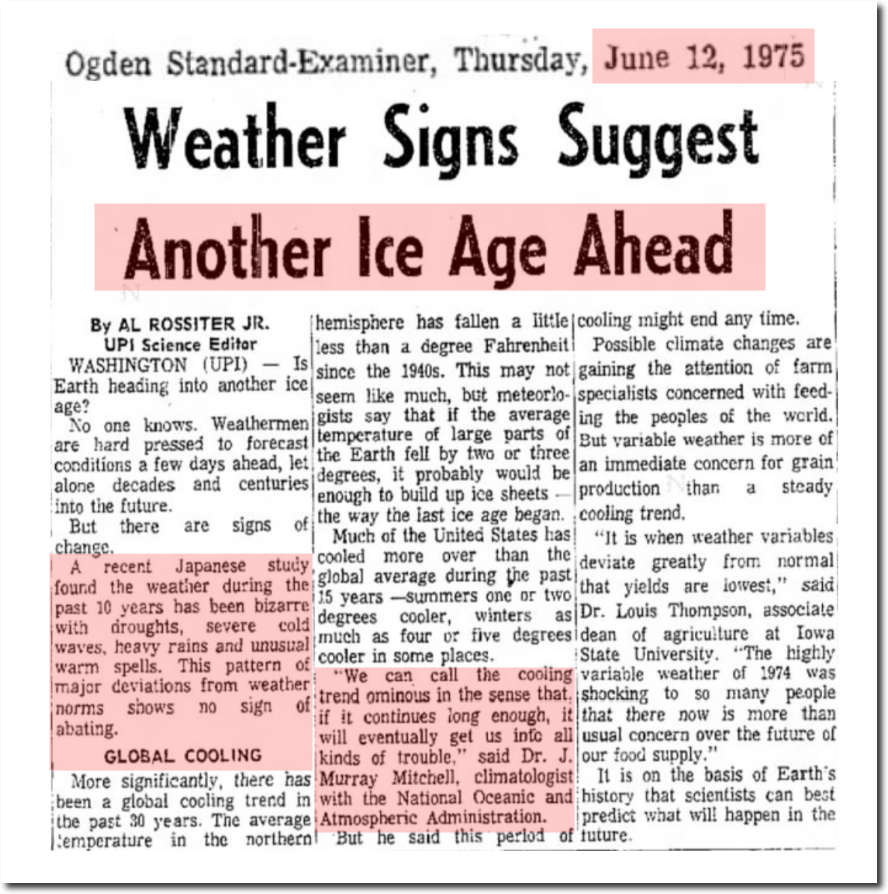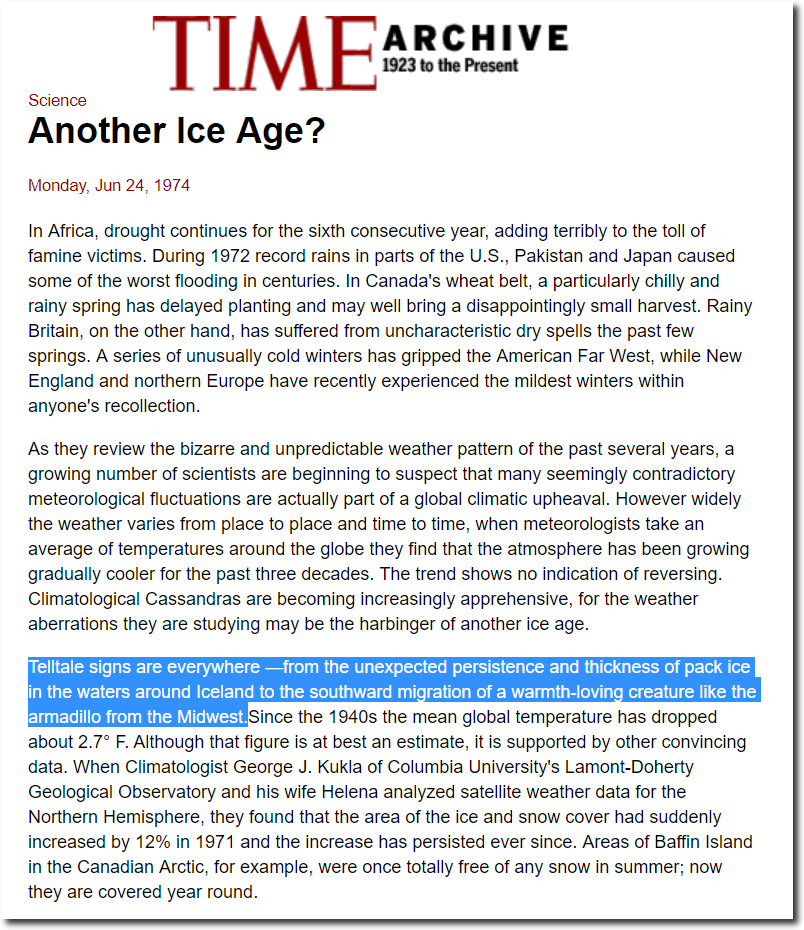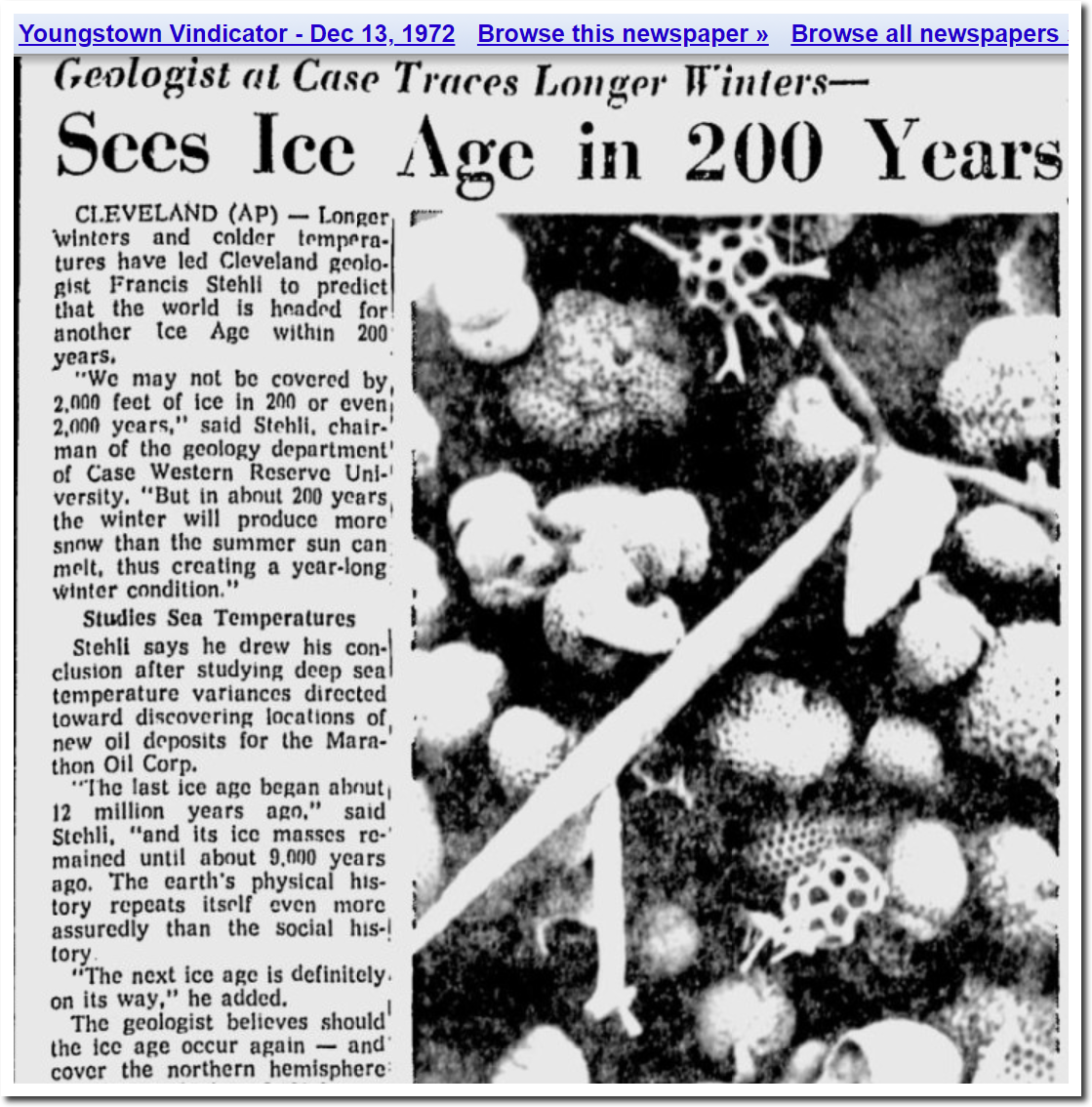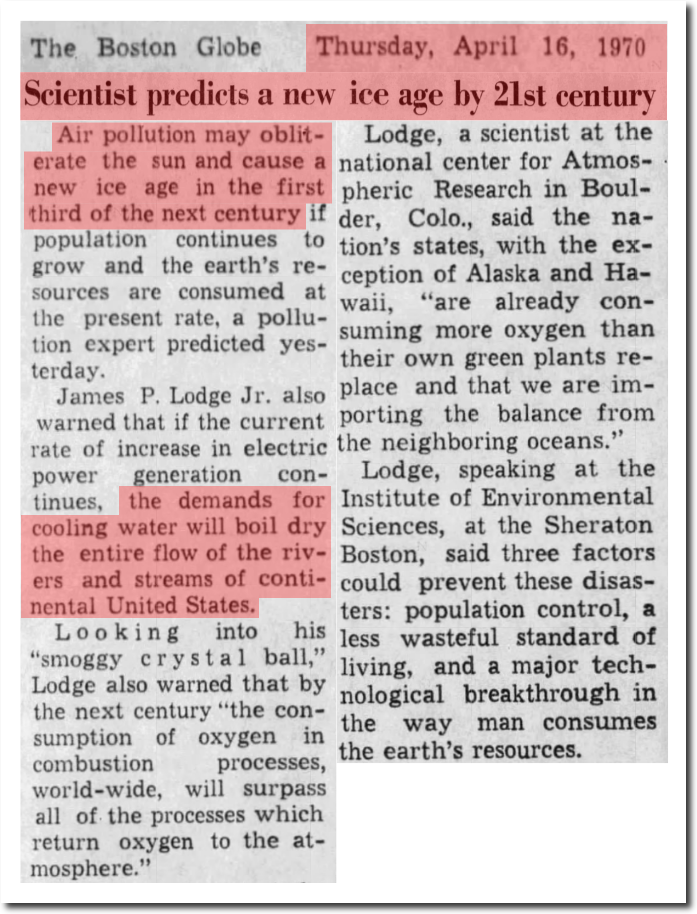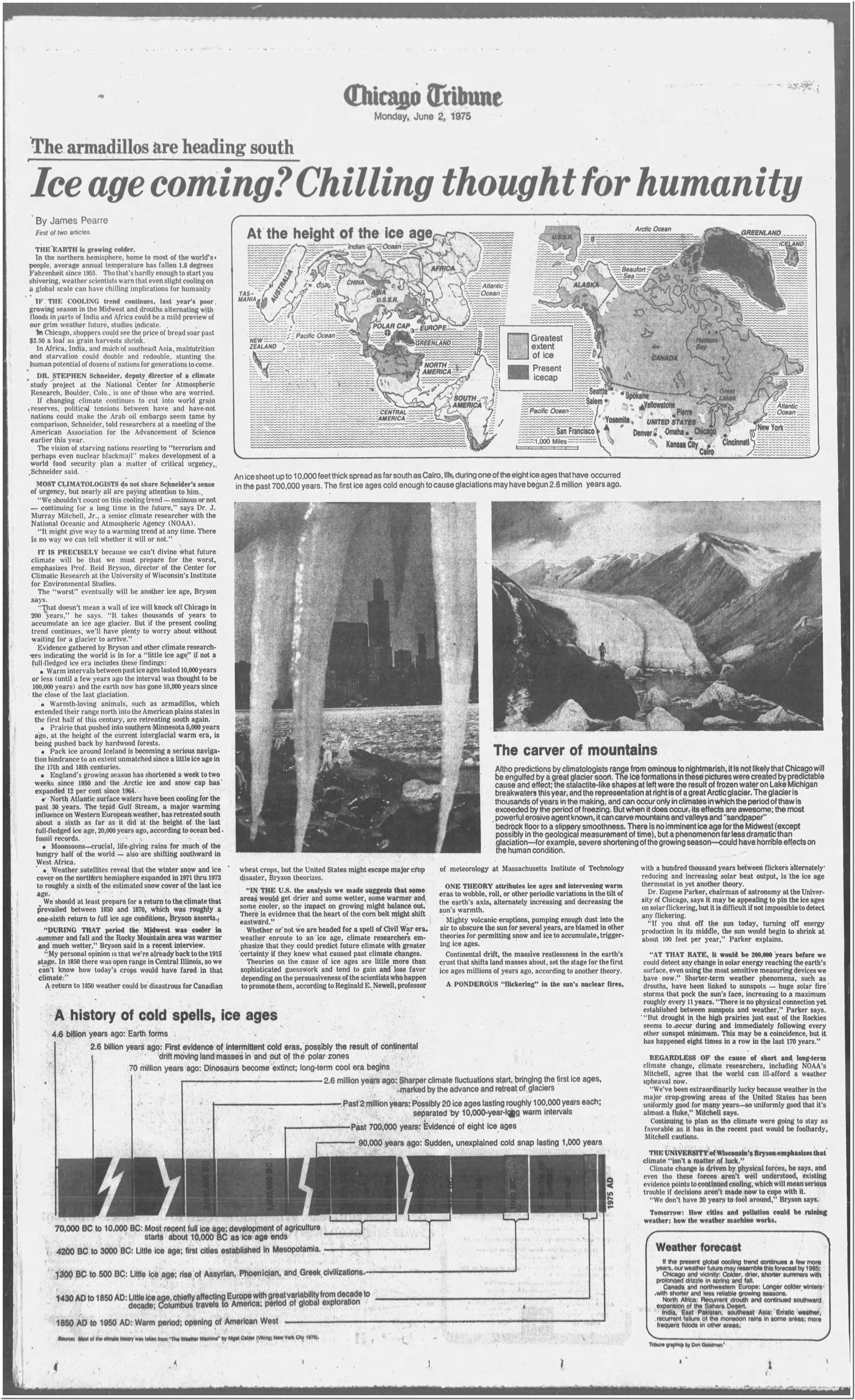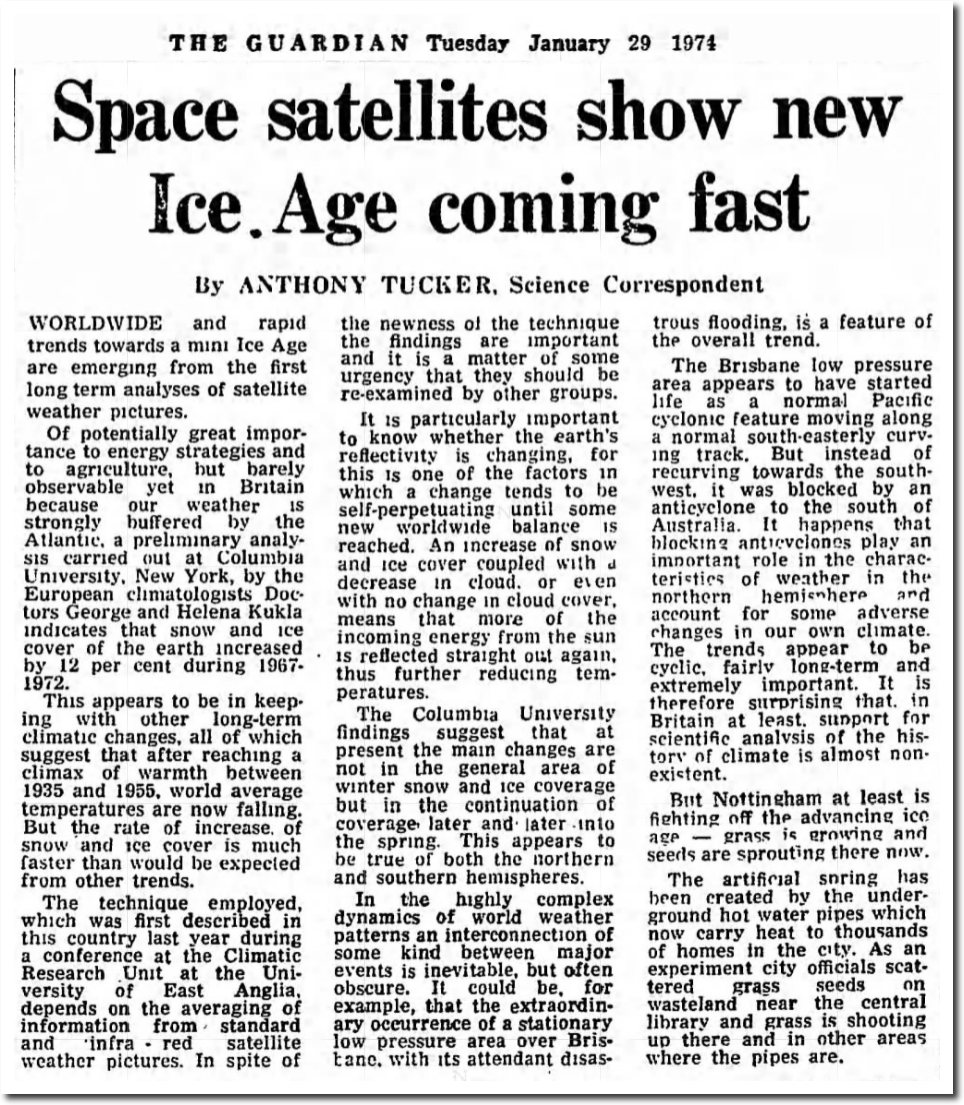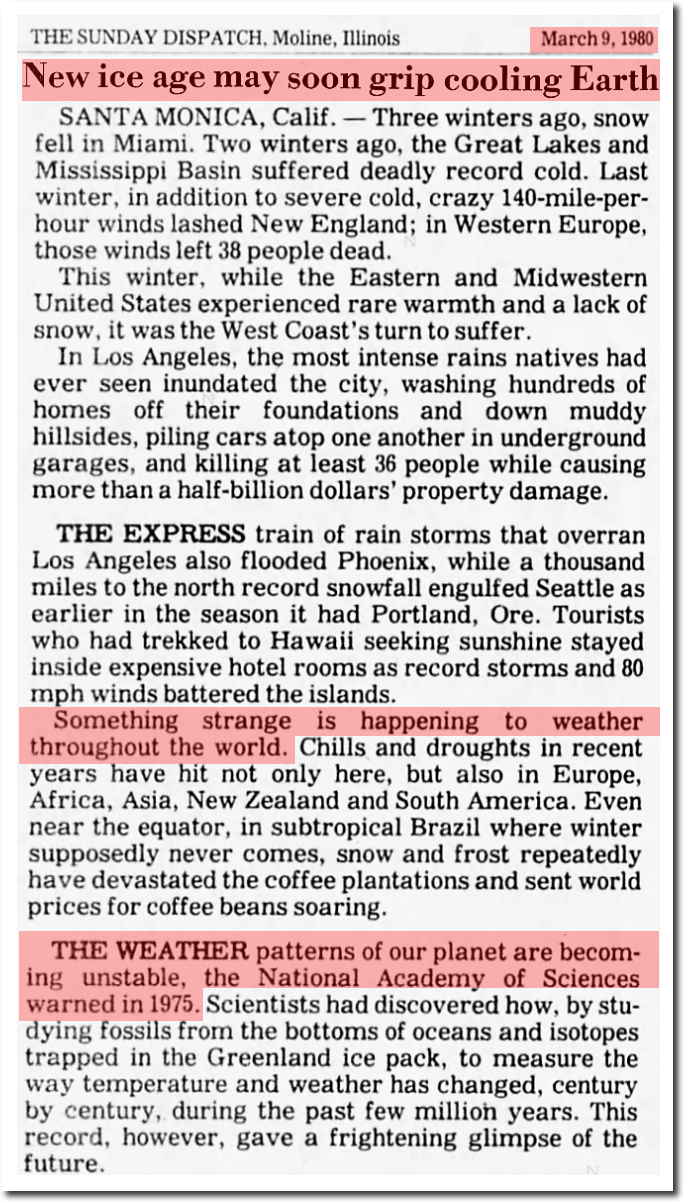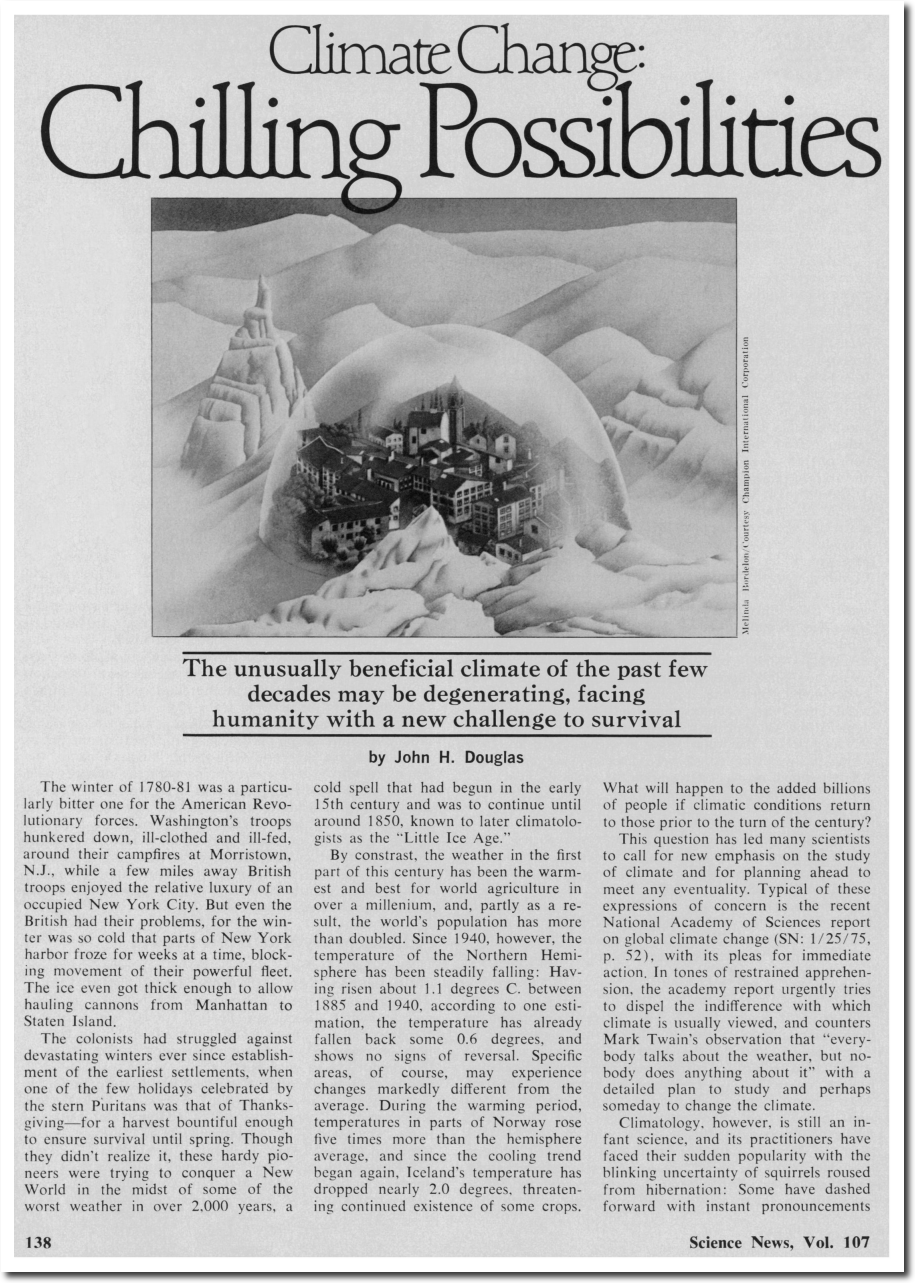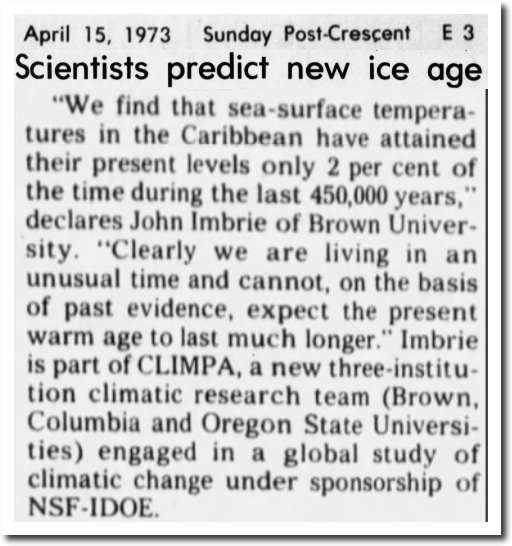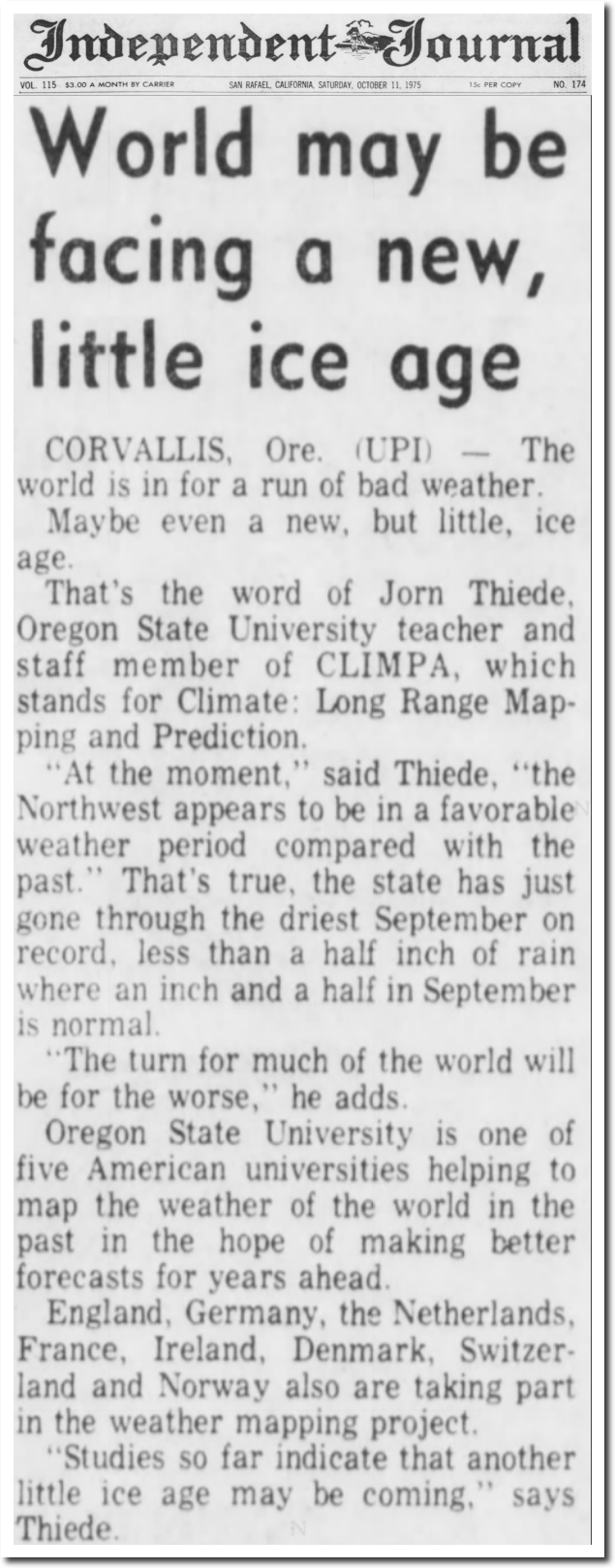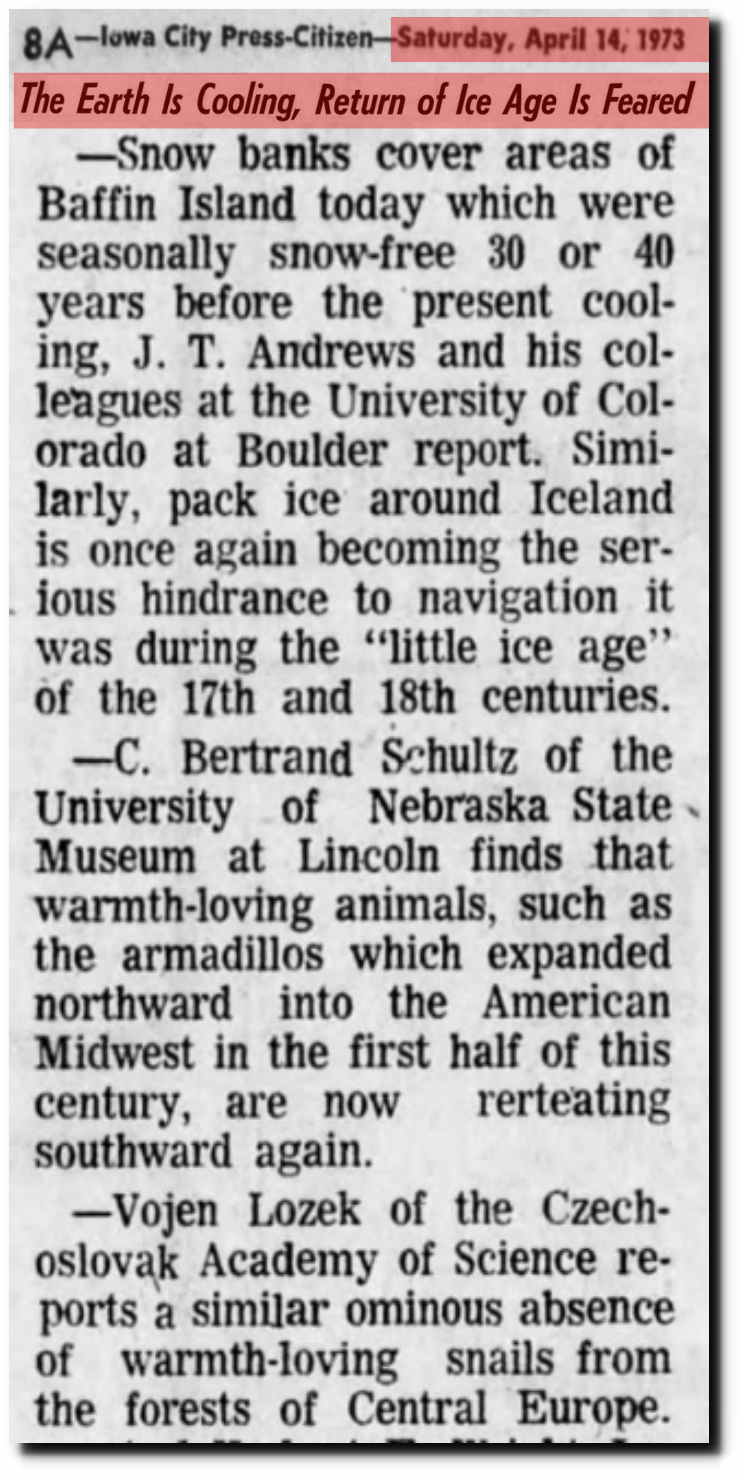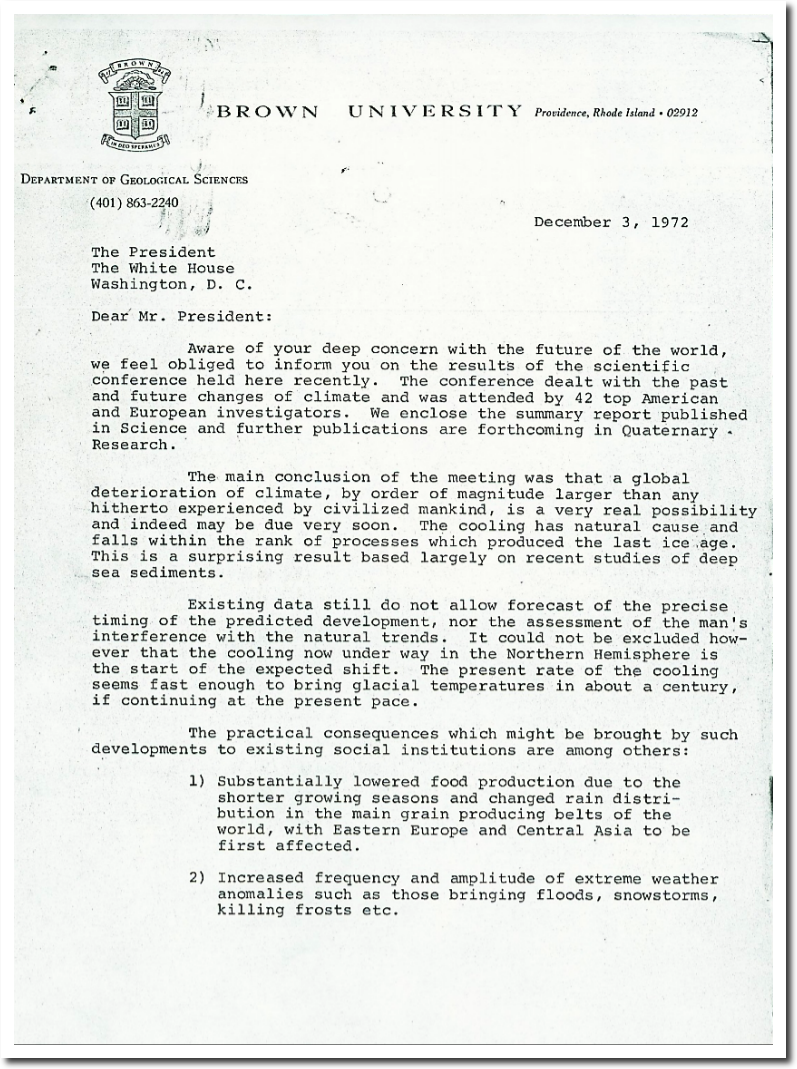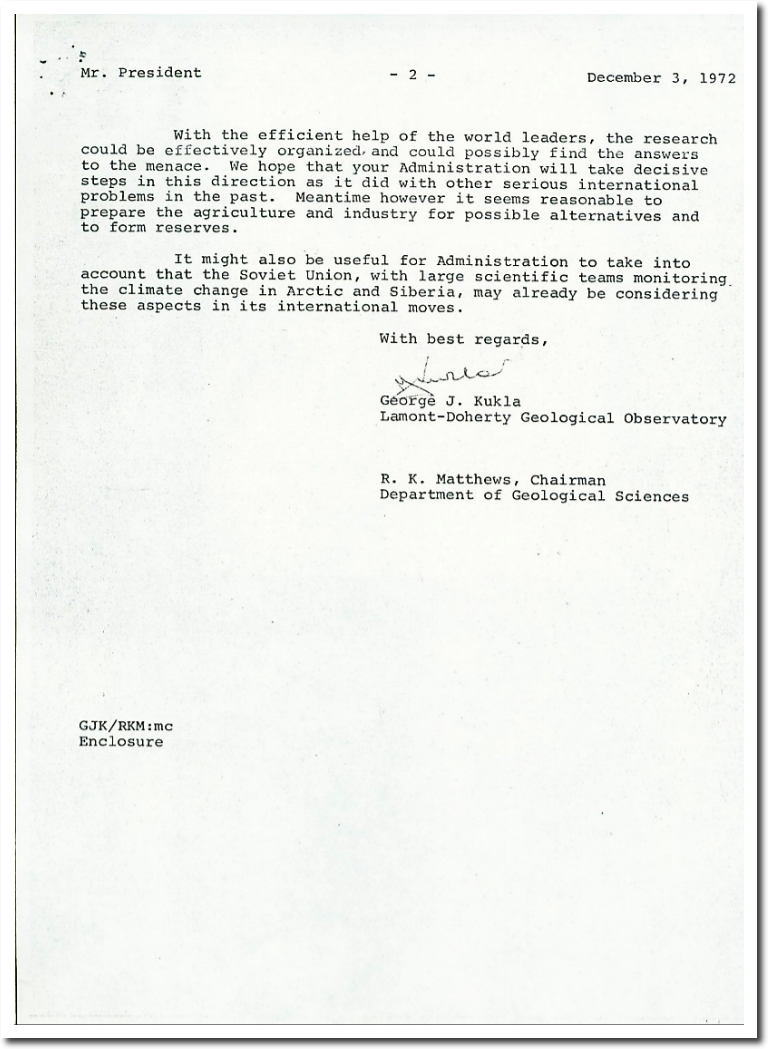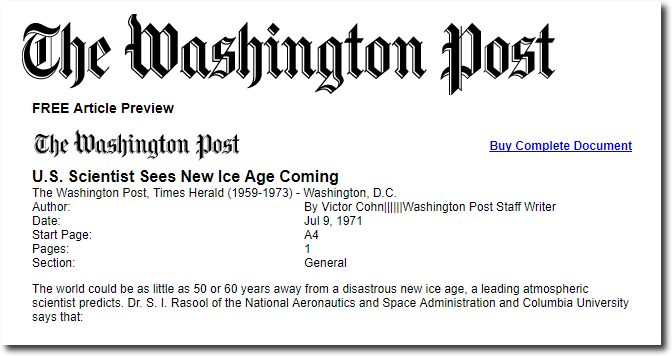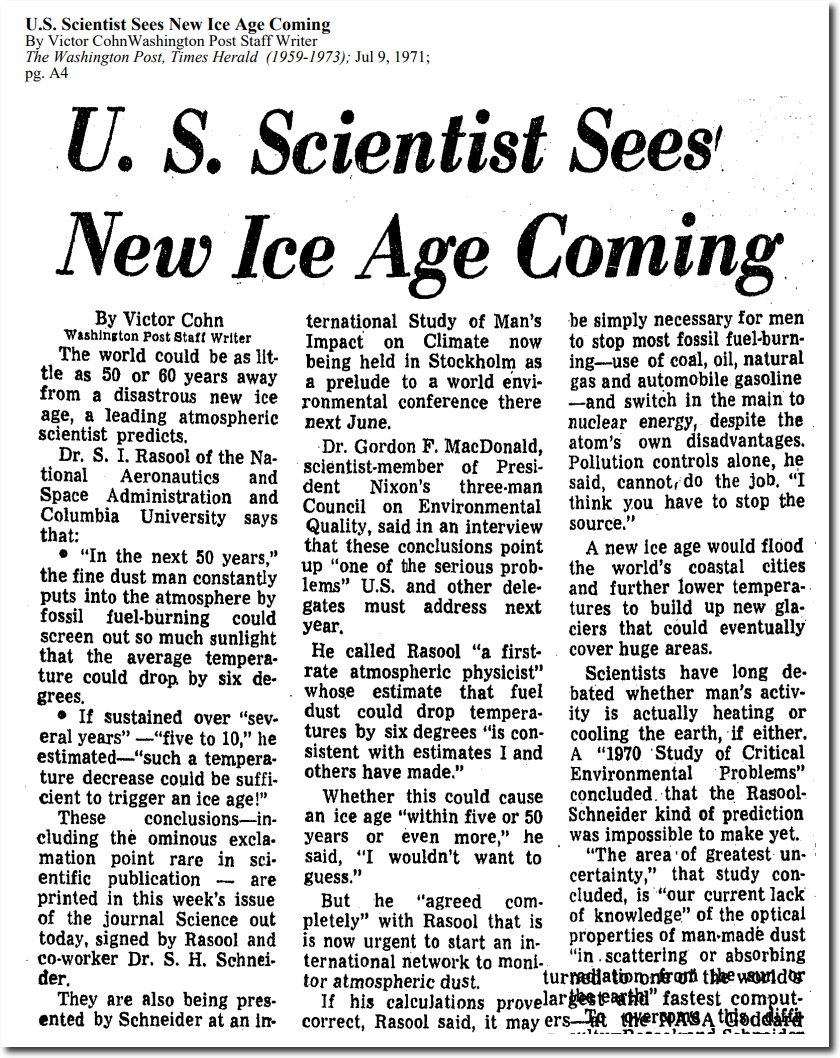When the National Climate Assessment was released last fall, a massive barrage of hysterical propaganda came with it – like this article in The Atlantic saying we are all going to burn up, based on an increase in US heat waves since the 1960s.
The Most Chilling Parts of the 2018 Climate Assessment – The Atlantic
The graph was taken from page 38 of the Fourth National Climate Assessment document released in November 2018.
Fourth National Climate Assessment, Volume II: Impacts, Risks, and Adaptation in the United States
But why did they choose the 1960s for their start date? The US has excellent temperature records going back the late 19th century, and in fact the 2017 National Climate Assessment showed heat wave data going back to 1900. The 2017 data showed unambiguously that US summers were much hotter prior to 1960, and that the 1960s and 1970s had the fewest heatwaves of any period in the US. This very important data was excluded from the 2018 report.
Temperature Changes in the United States – Climate Science Special Report
Data from the EPA shows the same thing.
I overlaid the 2018 NCA graph on the 2017 NCA data, and it becomes very clear what they are doing. The 2018 report released to the public, cherry-picked the only start date in the graph which they could use to create the appearance of a warming trend.
Here is the same overlay with the EPA graph – once again showing the extreme fraud in the 2018 NCA document.
The next two graphs show the very hot pre-1960 weather which is being hidden in the 2018 NCA report.
Reality is the exact opposite of what is claimed in the Atlantic article and the 2018 National Climate Assessment report. The frequency of hot days has plummeted in the US over the past century.
The number of all-time record maximum temperatures peaked in the US in the 1930s, and bottomed in the 1960s when then the NCA started their graph.
The number of record daily maximum temperatures in the US peaked in the 1930s, and bottomed in 1960’s, when the NCA started their graph.
The 1930s were extremely hot, and thousands of people died in the heat.
The Bulletin – Google News Archive Search
Same story in 1896.
During June 1896, Parker, Arizona had seven consecutive days over 120 degrees – a record which was only matched in 1905. Since 1960, the longest stretch of days over 120 degrees in Arizona is three.
The 1896 heat was not confined to the US. January, 1896 was the hottest month on record in New South Wales, Australia. Bourke averaged 110 degrees that month.
The Australian heatwave of January, 1896 was much hotter than this year’s claimed record heatwave. Like in the National Climate Assessment, the Australian Bureau of Meteorology hides all inconvenient hot temperatures prior to 1910.
The 1930s heat was also not confined to the US, with glaciers rapidly melting in Greenland, North America and Europe.
17 Dec 1939, Page 15 – Harrisburg Sunday Courier
18 Feb 1952 – POLAR ICE THAW INCREASING
By 1954, Spitzbergen had warmed 18 degrees.
08 Apr 1954 – World’s Temperature Getting Warmer
But the warmth of the 1930s and 1940s, turned rapidly into cooling, and by the 1960s there was unanimous consensus the Earth was cooling.
U.S. and Soviet Press Studies of a Colder Arctic – The New York Times
12 Jun 1975, Page 10 – The Ogden Standard-Examiner at Newspapers.com
TIME Magazine Archive Article — Another Ice Age? — Jun. 24, 1974
Youngstown Vindicator – Google News Archive Search
16 Apr 1970, 18 – The Boston Globe at Newspapers.com
02 Jun 1975, 76 – Chicago Tribune at Newspapers.com
29 Jan 1974, 5 – The Guardian at Newspapers.com
09 Mar 1980, 4 – The Dispatch at Newspapers.com
https://www.sciencenews.org/sites/default/files/8983
15 Apr 1973, 59 – The Post-Crescent at Newspapers.com
11 Oct 1975, Page 41 – Daily Independent Journal at Newspapers.com
14 Apr 1973, Page 8 – Iowa City Press-Citizen
In 1972, the world’s leading climate experts wrote a letter to President Nixon warning of a new ice age “in about a century.”
THE ROLE OF NOAA’S CLIMATE PREDICTION CENTER IN THE DEVELOPMENT OF CLIMATE SERVICES
NASA predicted an ice age by the year 2020.
U.S. Scientist Sees New Ice Age Coming
It isn’t difficult to see why the 2018 National Climate Assessment chose to start their graph during the very cold 1960s, and hide all the hot weather prior to that. They are committing blatant fraud, deceiving the public, and telling a story which is the exact opposite of reality. This is exactly what President Eisenhower warned about in his 1960 farewell address. Scientists are attempting to seize control of policy.
In the councils of government, we must guard against the acquisition of unwarranted influence, whether sought or unsought, by the military-industrial complex. The potential for the disastrous rise of misplaced power exists and will persist.
We must never let the weight of this combination endanger our liberties or democratic processes. We should take nothing for granted only an alert and knowledgeable citizenry can compel the proper meshing of huge industrial and military machinery of defense with our peaceful methods and goals, so that security and liberty may prosper together.
Akin to, and largely responsible for the sweeping changes in our industrial-military posture, has been the technological revolution during recent decades.
In this revolution, research has become central; it also becomes more formalized, complex, and costly. A steadily increasing share is conducted for, by, or at the direction of, the Federal government.
Today, the solitary inventor, tinkering in his shop, has been over shadowed by task forces of scientists in laboratories and testing fields. In the same fashion, the free university, historically the fountainhead of free ideas and scientific discovery, has experienced a revolution in the conduct of research. Partly because of the huge costs involved, a government contract becomes virtually a substitute for intellectual curiosity. For every old blackboard there are now hundreds of new electronic computers.
The prospect of domination of the nation’s scholars by Federal employment, project allocations, and the power of money is ever present and is gravely to be regarded.
Yet, in holding scientific research and discovery in respect, as we should, we must also be alert to the equal and opposite danger that public policy could itself become the captive of a scientific-technological elite.
Our Documents – Transcript of President Dwight D. Eisenhower’s Farewell Address (1961)

